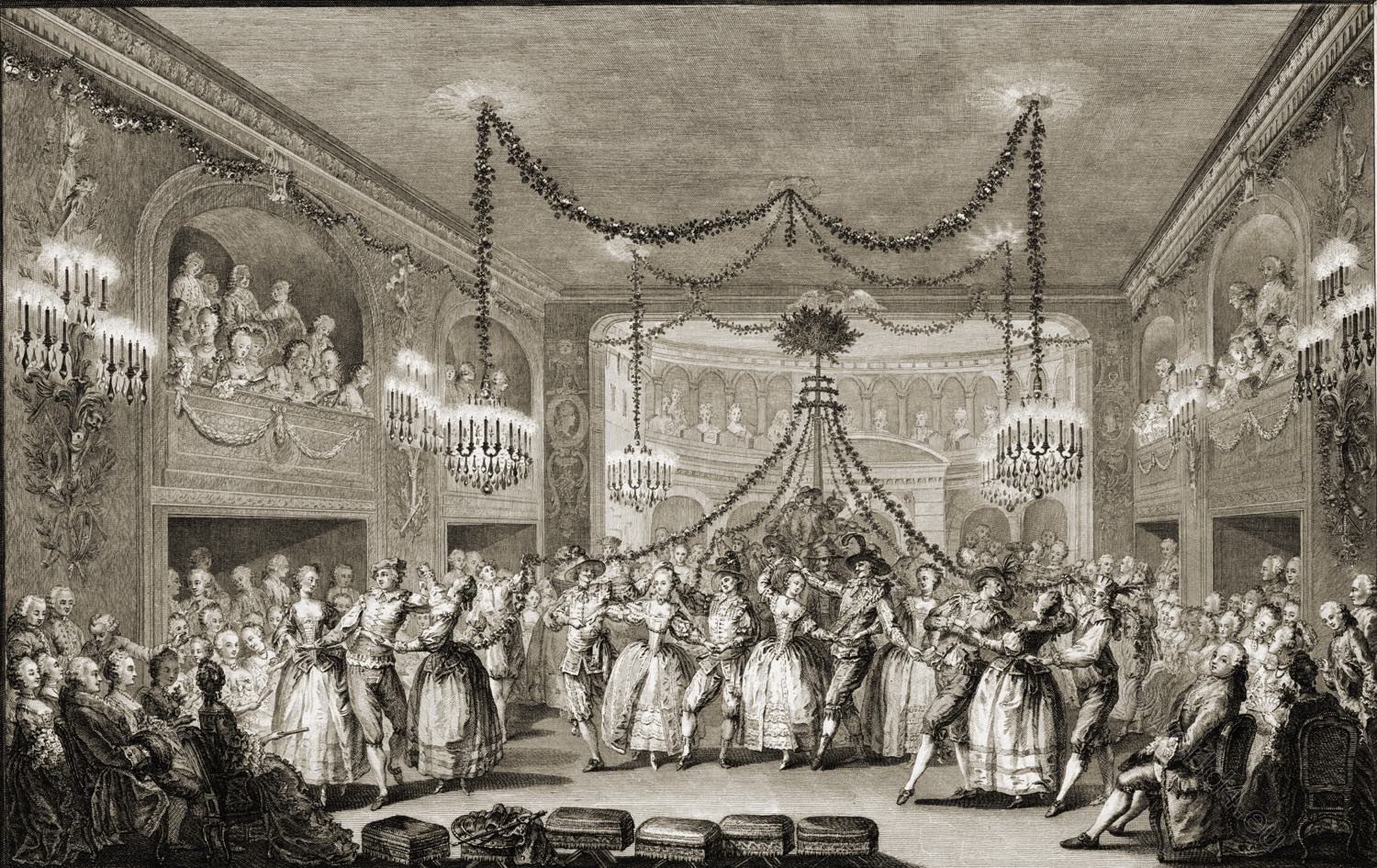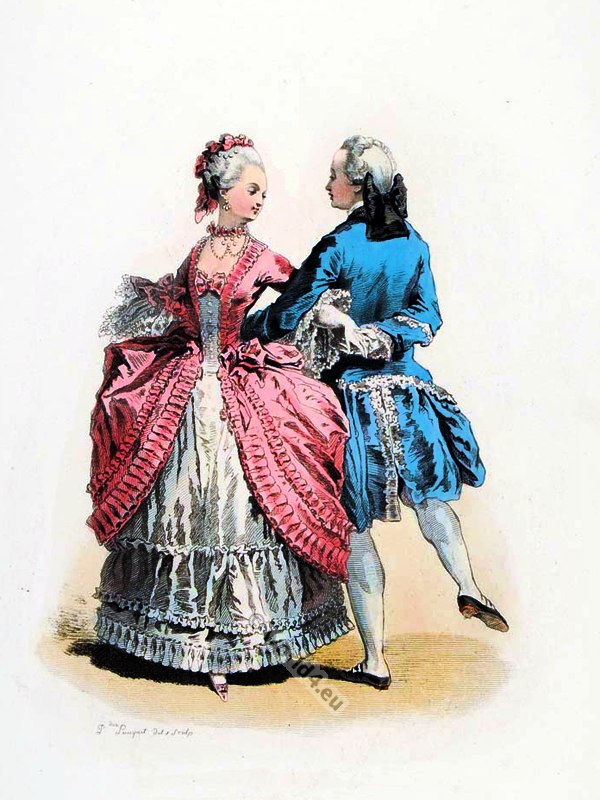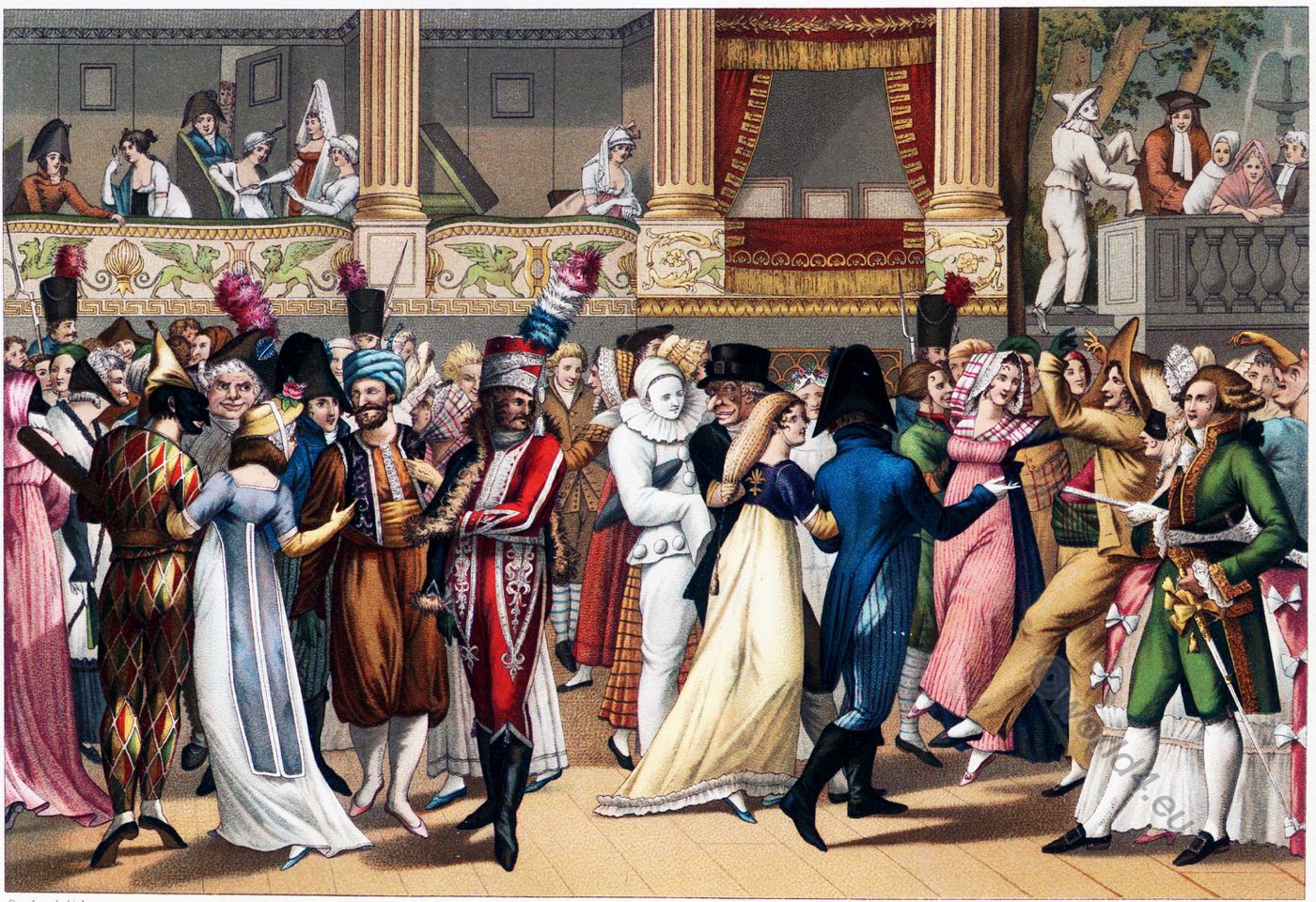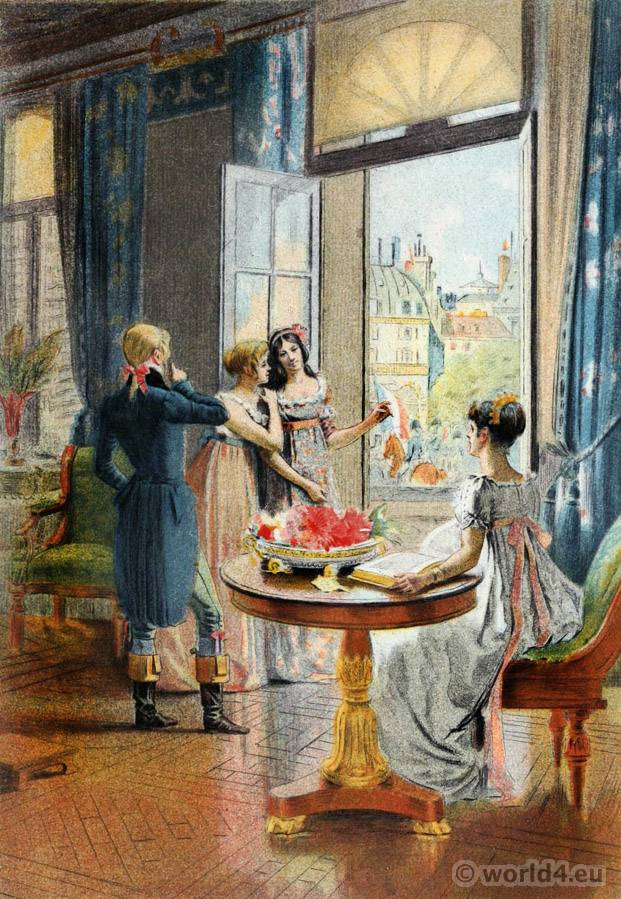
Carnival Ball at Versailles. Rococo era 1763.
May Ball given at Versailles during the Carnival of the year 1763 under the orders of M. the Duke of Duras, first gentleman of the King’s chamber, and ordered by M. de La Ferté, Intendant and General Controller of the silverware, menus, pleasures and affairs of the Chamber of his Majesty, Delin. M. A. Slodtz, Sculp. F. N. Martinet
The Théâtre de la Cour des Princes, located on the ground floor of the building connecting the central wing to the central building of the Palace of Versailles, was mainly used as a ballroom (cf. Journal d’Edmond-Jean-François Barbier)
Bal du May donné à Versailles pendant le Carnaval de l’année 1763 sous les ordres de M. le duc de Duras premier gentil-homme de la chambre du Roi, et ordonnée par M. de La Ferté, Intendant et Controlleur général de l’argenterie menus plaisirs et affaires de la Chambre de sa Majesté, Delin. M. A. Slodtz, Sculp. F. N. Martinet
Le Théâtre de la Cour des Princes situé au rez-de-chaussée du bâtiment raccordant l’aile du Midi au corps central du château de Versailles servit principalement de salle de bal (cf. Journal d’Edmond-Jean-François Barbier)

Related
Discover more from World4 Costume Culture History
Subscribe to get the latest posts sent to your email.






